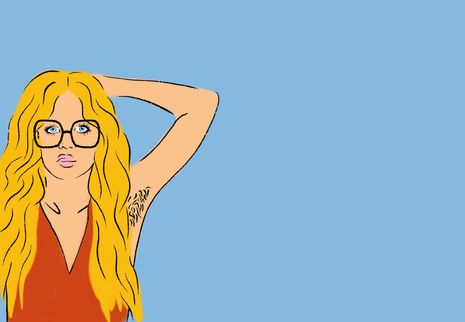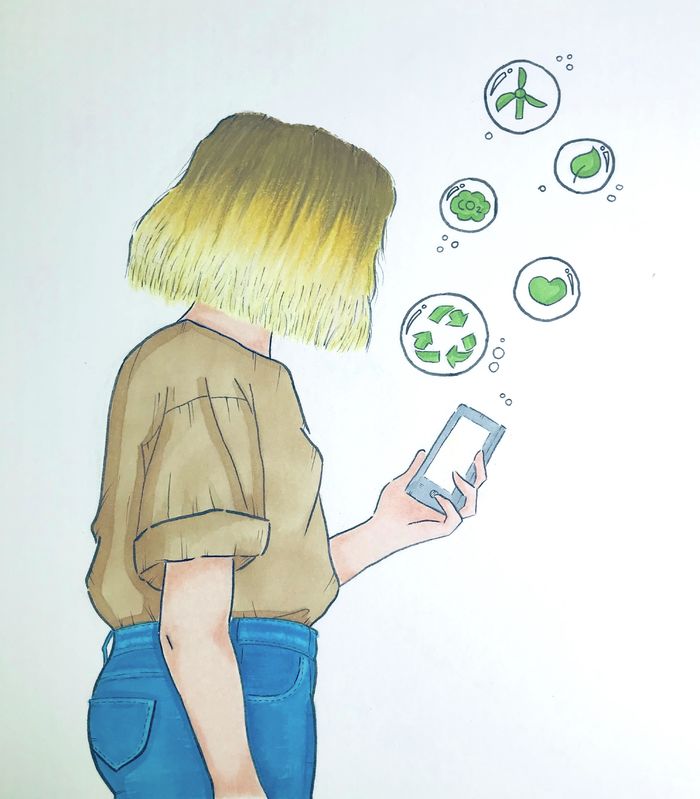Hair: What’s it for?
Holly Sewell considers the conventions associated with hair and the ways in which individuals and communities have used it as an expressive tool

The role of hair in fashion is fraught with politics, repression and potential. In the last hundred years we have seen a myriad of hair-related conventions pass through the canon, often failing to address nuances of gender and race. As a result, scalp, facial and body hair alike (or lack thereof) have each become symbols of traditional femininity or masculinity in a way that makes it impossible to find self-expression without making a grand statement
“Can keratin be considered a means of creativity as general as denim or leather?”
Towards the end of the 1910s, the Flapper era was dawning. With it came boyish, sleeveless dresses with dropped waists that embodied a rebellion against women’s fashion of the past. Despite the accompanying ’20s bob echoing this move towards masculinity (see Josephine Baker for some bob artistry), the Flapper dress had some less liberating consequences for hair as well. The sudden exposure of female armpits gave the razor company Gillette an entirely new market; very quickly, shaven was the norm. This proved to be far more enduring than the emblematic bob cut, and whilst head hair continued to undergo new trends every decade, body hair conventions were fairly static for the next fifty years. It wasn’t until the emergence of second-wave feminism and the Hippie movement in the ’70s that the politics of shaving became a more mainstream discussion.
In 1972, the first full issue of Ms. Magazine was published, featuring an article entitled “Body Hair: The Last Frontier″ by Harriet Lyons and Rebecca Rosenblatt. Hard-line feminists of the time often took the approach that insisted upon natural body hair as a display of allegiance, as is conveyed in the article. Although this succeeded in promoting body positivity in some sense, it has left hair (particularly body hair) entrenched in stigma. Since the ’70s there has undoubtedly been progress – but to what extent? And how much further can we go? Can keratin be considered a means of creativity as general as denim or leather?
Many drag artists are at the forefront of this intersection between the sociology of hair and its potential for fresh perspective in fashion. An industry which has traditionally been perceived as men masquerading as women, it is increasingly self-described as the performance of gender. As was put by the now internationally-known drag queen Crystal, “I don’t do drag to impersonate a woman, I do it to expose the fragility of masculinity. Keeping my body hair lets people know that I’m consciously rejecting my ‘masculinity’ in favour of something else.”
This blurring of lines is being adopted by a growing number of performers and outside of drag, its main proponents are still within the LGBTQ+ community. Non-binary writer and activist Alok Vaid-Menon explains: “not removing [their] body hair isn’t a passive action, it’s an active decision that requires constant justification amidst total & complete denigration”. There exists an innate connection between the appreciation of hair and the appreciation of gender-nonconforming (often particularly transfeminine) people – which is part of what makes such an acceptance vital for the progression of society.
Embracing non-scalp hair as natural is only the beginning; the idea that it can be used as a medium of art is still foreign to most of us. For instance, the relationship between hair and cultural identity provides scope for powerful creative discussion. London based designer Alix Bizet explores this interaction in her project “Hair Matter(s)”, by moulding her pieces (three jackets and associated headpieces made from human hair) to empower specific models. Her garments epitomise the reclamation of identity, as she exaggerates each person’s hair such that they can, quite literally, wear it with pride; it demands to be looked at, and is clearly a visible extension of their individuality. Whilst she draws inspiration from her own experience with hair in connection with her culture, in her work this is broadened to the idea of hair as an expression of diversity in all aspects of humanity.
In recent years, hair (in all its forms) has been edging its way into the spotlight. London Fashion Week 2020 saw the non-binary indie fashion label Art School defy all expectations of smooth-skinned runway models by actually gelling a model’s chest hair to spell out their brand name. Iconic. Such successful examples of body hair being warped to make an intelligent, impactful statement are disappointingly few and far between – but looking to the future, this could all change. The reign of social media makes showcasing these ideas easier than ever, and following on from the fearless “unicorn armpit hair” trend of 2019, anything seems possible. Not only is it imperative that we embrace every single variation of hair for the wellbeing of our communities and the progression of society, but also so that we can gain access to an incredibly exciting new tool as a means of self-expression through fashion.
 News / CUP announces funding scheme for under-represented academics19 December 2025
News / CUP announces funding scheme for under-represented academics19 December 2025 News / SU reluctantly registers controversial women’s soc18 December 2025
News / SU reluctantly registers controversial women’s soc18 December 2025 News / Cambridge welcomes UK rejoining the Erasmus scheme20 December 2025
News / Cambridge welcomes UK rejoining the Erasmus scheme20 December 2025 Features / Should I stay or should I go? Cambridge students and alumni reflect on how their memories stay with them15 December 2025
Features / Should I stay or should I go? Cambridge students and alumni reflect on how their memories stay with them15 December 2025 Film & TV / Timothée Chalamet and the era-fication of film marketing21 December 2025
Film & TV / Timothée Chalamet and the era-fication of film marketing21 December 2025










